Care Choices
Family and friends | Hourly Visiting Care | Residential Care Home | Live-in Care
A care choice crisis
This failure to plan ahead has left many exposed to one day being forced into a care situation that doesn’t best suit their needs. For example, a sudden fall, a stroke, or a declining long-term condition like Dementia, can take families and friends to breaking point, and rush them to make an ill-informed decision about the care of a loved one.
of people aged 60 and below have not planned for care
of people aged 70 and below have not planned for care
The goal of this short paper is to encourage you to have a pre-emptive ‘Care Conversation’ with your ageing loved ones; to explore the care options available to them before it’s too late; and to help you make a confident, more informed decision together, about the most suitable type of care they’ll receive when the time comes.
We’ll do this by exploring the four main care options available in the UK. We’ll discuss and compare some of the pros and cons of each option, including the relative cost of each care model, and we will share evidence of why Live-in Care deserves serious consideration over the current, often default outcome: institutional care homes.
Much of our discussion is underpinned by research The Live-in Care Hub conducted and commissioned earlier this year.
The Four Main Models of Care
Weighing Up the Pros and Cons
When it comes to elderly care provision in the UK, there are four main options to choose from. It’s worth exploring each of them thoroughly to understand which one(s) might suit your loved one best.
It is quite common for family and friends to step in and provide care for elderly relatives out of a sense of duty, love, or responsibility to them. This is often the first port of call for someone who is starting to show signs of needing assistance, and it usually happens gradually, without any formal discussion or planning.
Aside from being the most cost-effective option (in the sense that you don’t need to pay someone’s wages), the main advantage of ‘Friends and Family’ is the fact that the person receiving care can stay in their own home, surrounded by people they know and love.
However, providing care can be demanding and stressful. It requires a lot of time, effort, and emotional energy, and can easily lead to burnout for plainly well intended family members providing care who have no formal training or experience.
Not only that, but for the person receiving this type of help, there is a higher risk of developing new health issues or even injury. Family carers are usually not trained to detect early warning signs of health complications and they may not have the knowledge or skills to administer proper care, safely. In short, while caring for a loved one is a noble and rewarding job, it can be challenging to manage on your own, and it isn’t always the best option for the person in need – especially if they have complex or developing health conditions. It can also cause tension amongst family members, where one person may feel more ‘put upon’ or expected to deliver the care.
For families curious to try professional care, and for those who don’t want to make a big commitment, Hourly Visiting Care could be a good first option. This care model involves one or two carers visiting clients for a few hours each day or week to help your loved one with everyday activities.
Due to the ad-hoc nature, Hourly Visiting Care can be a more comfortable way to introduce people to professional care – especially for those who don’t need around-the-clock support but do need help with tasks like cleaning, cooking, and shopping.
With proper support from trained professionals, this type of care not only gives family carers a break, but also allows the person receiving care to maintain their independence and health for longer, in the comfort of their own home.
The downside we hear about most with this type of care is the fact that introducing a stranger to someone’s home can cause anxiety – for both the person receiving care, and you as a concerned family member or friend. There’s also a certain amount of due diligence required to find the right personality fit between carers and the family member(s) in receipt of care which can also cause unwelcome stress. However, there are well established ways to mitigate these downsides which are covered later in this report.
In the unfortunate event someone you love needs more support than can be given at home, moving to a residential care home has several upsides.
Primarily, care homes have a dedicated team of trained professionals who are employed to provide 24-hour supervision and support for residents, ensuring their safety and wellbeing.
And, to help combat feelings of loneliness and isolation, some care homes give their residents a sense of community by hosting regular social activities.
This, combined with the fact that it’s now (another Pandemic permitting) relatively easy for residents to see their friends and family in the privacy of their own bedroom, can make moving into a care home a good choice for those with severe health conditions like Dementia.
The disadvantages of Residential Care, however, also reflect some of the main drivers behind the creation of the Live-in Care Hub. We will explore them in depth later, but to summarise…
To benefit from residential care home services, the person in need of care needs to leave their home and move into an institution. In most cases, this causes a huge amount of stress and heartache – for both the new resident and their families.
Not only that, but instead of having a tailored care package designed around what the care user wants and needs, they must relinquish their independence and adjust their lives to fit into that of an institution. For reasons we’ll share soon, this almost always impacts the care home resident’s overall sense of well-being and happiness.
For those with advanced health conditions requiring 24/7 care, the most viable long-term alternative to a care or nursing home is Live-in Care in the client’s own home.
In this scenario, a professionally trained carer moves into the client’s home and provides them with personalised, 1-1 support. Carers may be self-employed, or ‘fully managed’ by a care providing organisation. The suitability of one or the other will depend on your unique situation.
Following a plan that has been designed by the user’s family and the care-providing organisation, a Live-in carer may help your loved one with everything from mobility and personal care (bathing, dressing, preparing meals, managing medication), to housework, pet care, admin, chaperoning, and more : including accompanying clients on holiday trips.
As a natural extension of this personalised and compassionate service, Live-in carers also tend to become a reassuring source of emotional support and companionship for their clients.
As with all types of at-home care services, your loved one’s Live-in care plan would be flexible, and may be adjusted to suit their specific needs.
This tailored approach gives everyone greater peace of mind, knowing the care user is receiving high quality, personalised attention and support in the comfort of their own home.
However, as with all types of care, there are some drawbacks to Live-In services. Perhaps the most notable one being safety and privacy concerns.
We understand that it can be daunting to welcome a stranger into one’s home, especially for a vulnerable adult or their family.
A good care provider will always work hard to mitigate these concerns. For example; all the Live-in Care Hub’s members consult and co-operate with families to find the most suitable and qualified carers for their loved ones – taking account of your family member’s physical and emotional needs, values, personality, temperament, and more.
Plus, if for whatever reason, the care provider’s first choice of carer isn’t a good fit, from say a personality perspective, the provider will immediately find an alternative carer. And they will continue to do so until you and your family find a carer (or group of carers) that you’re happy with.
In summary
For individuals and families in need, there are four main care options available: Family and Friends; Hourly Visiting Care; Residential Care; and 24/7 Live-in Care. While we have laid them out separately here, our experience has shown they often work best in sequence.
For instance; to begin with, your loved one may only require Hourly Visiting Care a few times per day or week, while you or other family members help the rest of the time.
Then, once they are used to receiving professional care at home, you may be in a position to take a respite break away, leaving your loved one in the capable hands of a Live-In Carer that you know and trust. Easing someone into Live-in Care like this can make it much easier to book a full-time Live-in Carer if the situation becomes more than you and your family can sensibly handle alone (for example, if your family member’s condition deteriorates and their needs become more complex).
As your loved one finally moves towards the end of their journey, additional care may be necessary – either from another Live-in Carer or an Hourly Visiting Carer – until they pass away peacefully at home. (Unfortunately, in rare cases, for those with deteriorating conditions like Dementia, Residential Care may be the only solution).
Our Top Tip for Making a Decision
Start with The End in Mind
Due to the many factors and opinions involved, choosing the right type of care for someone you love can be daunting and confusing.
However, there is one consideration that should never be overlooked, and may help to guide your collective decision: How does the person being cared for want to live?
Elderly care is a deeply personal matter that requires a thoughtful and individualised approach. Understanding someone’s wishes for their final years means you can work to find an option that aligns their care needs with their personal preferences and enhances their quality of life and their overall sense of wellbeing.
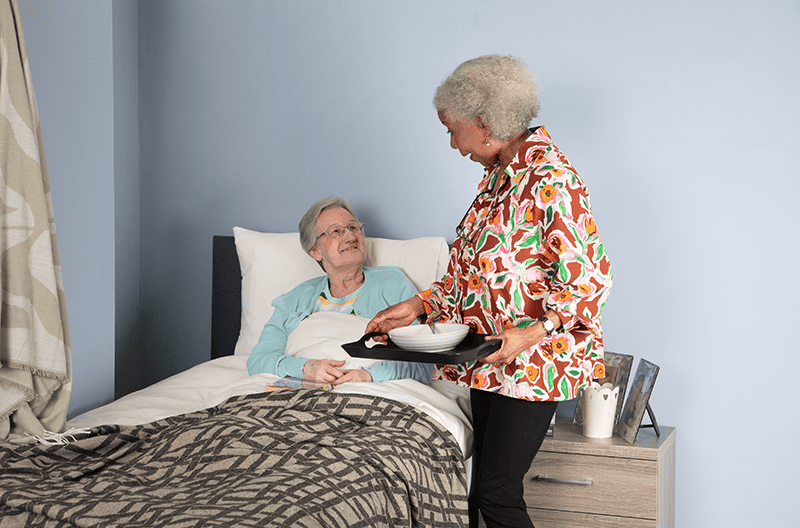
To help us understand the preference of UK adults in the future, the Live-in Care Hub commissioned an independent study2, which asked 2000 people (aged 50-76) the following question:
“Would you prefer to stay in your own home until the end of your life if that was possible, or would you rather move into a care home?”
The results were unsurprising.
Over
of people said they would prefer to stay in their own home. This coincides with a YouGov survey which also found most adults
would like to stay in their own home if they reached a point where they could no longer live independently³.

However, weighty questions like the above can be tough for some people to answer. Especially for those with impaired cognitive function, such as those living with Dementia.
So, if this is the case with your loved one, we suggest you start the ‘care conversation’ by asking simpler questions like:
- What activities do you enjoy? (e.g., gardening, watching TV, going for walks?)
- Let’s talk about the activities you enjoy e.g. …
- What things bother you? (e.g., being told what to do?)
- Let’s talk about what you like and what irritates you e.g …
- Can you describe your perfect day from the moment you wake up?
These small prompts, along with props to aid memory, where needed, should help you to build a picture of someone’s most comfortable long-term care scenario, without overwhelming them.
For people living with Dementia, direct questions can put them under a lot of pressure and effectively stop them from being able to cope with the conversation, so the use of the phrase: ‘let’s’ takes some of the pressure off, and makes the conversation feel more collaborative and doesn’t force the person to feel pressured to recollect what they need.
In summary
When choosing elderly care options for a loved one, it’s crucial to take into account their personal preferences and values. Not only out of respect for them, but to help reach a care decision that is sustainable, and maximises their comfort and well-being, long-term.
When asked, 66% of people told our researchers they would like to stay in their own home until the end of their life, suggesting that most adults in the UK would be happier receiving some type of Live-in care service than they would moving into a care home.
If you’re unsure about how to broach this subject with your loved one, we suggest you start with simple questions like those listed above. This indirect approach not only helps to begin the all-important care conversation, but their subtlety may also alleviate the stress and anxiety associated with the need for care.
You may wish to refer to the Alzheimer’s Societies’ ‘This is Me’ tool: https://www.alzheimers.org.uk/get-support/publications-factsheets/this-is-me
Health and Happiness
They can have it all
As we age or learn to live with long-term health conditions, many of us will find ourselves unable to do simple things we used to do with ease; like just going for a walk or a drive in a car.
This loss of ability (and independence) can be unnerving and frustrating, which in our experience, often leads to feelings of hopelessness in older people.
That is why, when exploring care services for someone, it’s crucial to find a provider who prioritises not just your loved one’s physical health, but their mental and emotional wellbeing too.
By prioritising their users’ health and happiness, care organisations make an enormous impact on your loved one’s overall quality of life.
But how can we measure the health and happiness provided by different care models?…
By conducting a secret shopping survey of over 50 care providers in 2023, the Live-in Care Hub have tried to answer this question.
(Please note: for the ‘Health and Happiness’ study that follows, we only assessed Live-In Care and Residential Care companies. This is due to the lack of reliable data and the inconsistent nature of other care models of hourly visiting care and friends and family care. Plus, those who receive either Live-In or Residential care also typically belong to the same age group and have comparable medical conditions, which require round-the-clock support from the same group of people. Therefore, comparing Live-in and Residential care allows for a more practical and valid comparison between two similar groups of individuals).
Health
When it comes to any type of healthcare, basic provisions like washing, dressing, dispensing medication, and adequate nourishment should never be missed.
But how can you tell whether your loved one will have these basic needs met by a care provider or model, beyond relying on the care organisation’s word?
One way is by assessing the rate of hip fractures suffered by different care users4.
Why? Because hip fractures are mostly caused by falls . And falls can be caused by medication mishaps, dehydration, and hunger5 – all of which can be largely avoided with good healthcare and monitoring, and are further avoided by older people being looked after in familiar surroundings.
So, to measure the quality of healthcare that both Live-in and Residential Care models can deliver, we asked both types of providers to reveal how many client hip fractures they reported in the previous year…
The results
The group of Live-in Care Providers we asked revealed an average rate of 6 hip fractures suffered per 100 Live-in Care users.
Comparatively, when asked the same question, our study of care homes in Boston (Lincolnshire, UK) reported a higher rate of 17 hip fractures per 100 residents annually6.
These results indicate that someone is almost 3x more likely to have a hip fracture if they are in Residential Care than if they receive Live-in care in their own home.
Many factors contribute to these findings, but one obvious explanation is the fact that Live-in Carers can provide 1:1 support to their clients, where care home staff cannot.
The Live-in carer’s ability to give more focused, individualised attention to medication, hydration and nourishment means their clients are exposed to less ‘fall risk factors’ than those living in a residential care home, where staff are responsible for multiple residents with competing needs.
In addition, it’s clear that loved ones in receipt of Live-in-Care are naturally more familiar with their own home than with that of an institution.
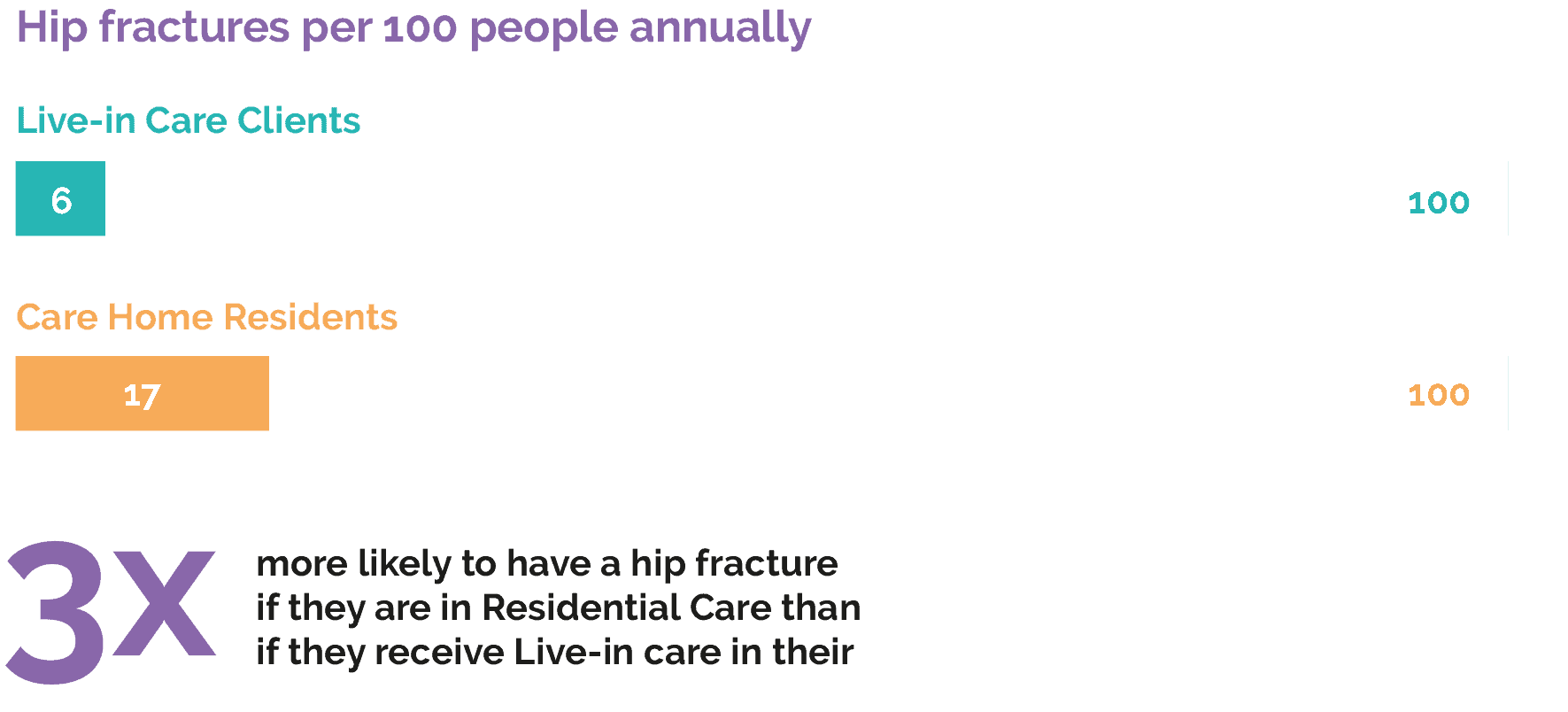
Freedom and Happiness
In our experience, the level of freedom someone enjoys has a direct impact on their overall happiness.
When elderly care users lack freedom, it often leads to feelings of frustration, helplessness, and boredom. But by giving them choices and opportunities to pursue their interests and exercise their independence – for example allowing them to pick their own meals, activities, and daily routine – care providers can significantly enhance their sense of well-being and overall quality of life.
Earlier this year, to help our community understand the level of freedom available to both Live-in Care and Residential Care users, we asked a group of providers the following question: “If my mother wants to go for a walk, can she?”
The responses were illuminating…
Every single Live-in Care provider told us their clients have the freedom to go for a walk whenever they want. And they can do so safely, in the company of a dedicated carer.
Contrastingly, just under a third of the Residential Care Homes we asked said it was either impossible or very unlikely that a resident could go for a walk outside the grounds (30%) unless a family member or visitor took them out.
These responses mirror those collected by our previous survey, conducted in 20187, which showed that 25% of residential care homes would not let people out for a walk, without a visiting family member/ friend, or in some cases, not at all.
It is also worth noting that, with the advent of personal GPS devices and smartphones, many Live-in Care providers now let their clients go for walks alone, if that is what the client wants; because this technology significantly reduces the chance of someone getting lost or having a fall and not being discovered.
In any event, if the client is able, walks in the company of a Live-In Carer remains an option at minimum.
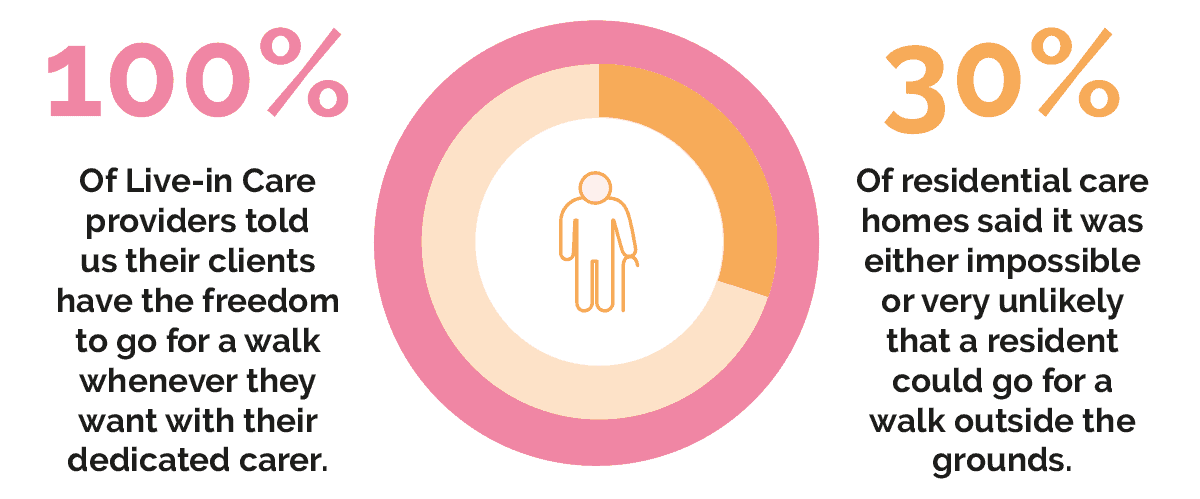

In summary
When exploring full-time care for your loved one, we advise choosing a model that offers the best quality of care with minimal disadvantages.
To help you do this, we compared the experience of Care Home Residents and Live-in care users, using two quality indicators:
1. The rate of hip fractures suffered by users annually
2. The level of freedom users experience
Our findings conclude that the quality of care provided by Live-in care is generally better than that of Residential Care Homes, because Residential Care users have a much higher chance of experiencing a Hip Fracture than those under the supervision of a Live-in carer, and Live-in care users have more freedom and autonomy to do what they want, when they want, with support from a dedicated carer.
These findings are likely down to the fact that, understandably, Residential Care Homes do not have enough resources to provide the same level of personalised, 1:1 support that Live-in care can.
The Important Question
How Much Does It Cost
As with any major life decision, it’s crucial to understand the financial implications of each care option available to your family. This is all the more important now that government funding for long-term elderly care today is less available.
Over the last ten years, the threshold for how unwell someone must be to access state care has risen; the amount of funding available has shrunk in real terms for adult social care; and the number of elderly people who need care has grown.
In short: most adults in the UK – now and in the future – will need to find and pay for care themselves.
By understanding the costs associated with each care model, families can proactively plan the finances required (potentially using the family home to do so and by using a suitably qualified financial advisor) and work towards a solution that considers both the quality of care your loved one needs and their budget.
However, many generalised cost figures published on the internet are years out of date. So, to help you gain some clarity, the Live-in Care Hub gathered prices in May 2023 from over 50 different care providers8.
In summary
As you can see, there is a lot of variability in care costs. Even in a very small geographical location, the price of Hourly Care and Residential Care can differ by a third or more, depending on the organisation. Live-in Care also shows price variability, but generally less than Residential Care.
However, while cost is an essential consideration, it should not be the only factor to consider when selecting an elderly care service. Most families focus on finding the best possible care that meets the individual’s needs and preferences of their loved one in need of care while ensuring their comfort, safety, and well-being.
Note: for Live-in Care costs, our secret shopping survey examined providers which provide self-employed, and fully managed, CQC registered carers.
As with Hourly Care providers, all the Live-in Care organisations we asked were able to provide a precise cost estimate over the phone.
Price comparison
For introductory care with a self-employed carer, the weekly cost ranged from £950 to £1,305, giving us an average cost of £1,100 per week.
For fully managed care with a CQC registered care provider, we found a wider price range. The quotes we received here varied from £1,250 per week up to £1,900 per week, with an average fee of £1,560 per week.
Hourly visiting care providers yeilded a narrower range of costs.
Price comparison
We received care quotes between £22 to £35 per hour, resulting in an average of £29 per hour for one visiting carer.
During our study of Residential Care Home costs, a large majority of the providers we contacted were happy to share precise figures with us. However, we did encounter some providers, who either refused to give any indication of cost (4%) or gave a range of prices with no clear top end (13%).
Price Comparison
Ultimately, this study encountered a wide range of prices for Residential Care. The most expensive care home quote we received was £2,500 a week. The least expensive was £750 a week, giving us an average price of £1,275 per week. The average price of the most expensive care homes was £1,620 per week.
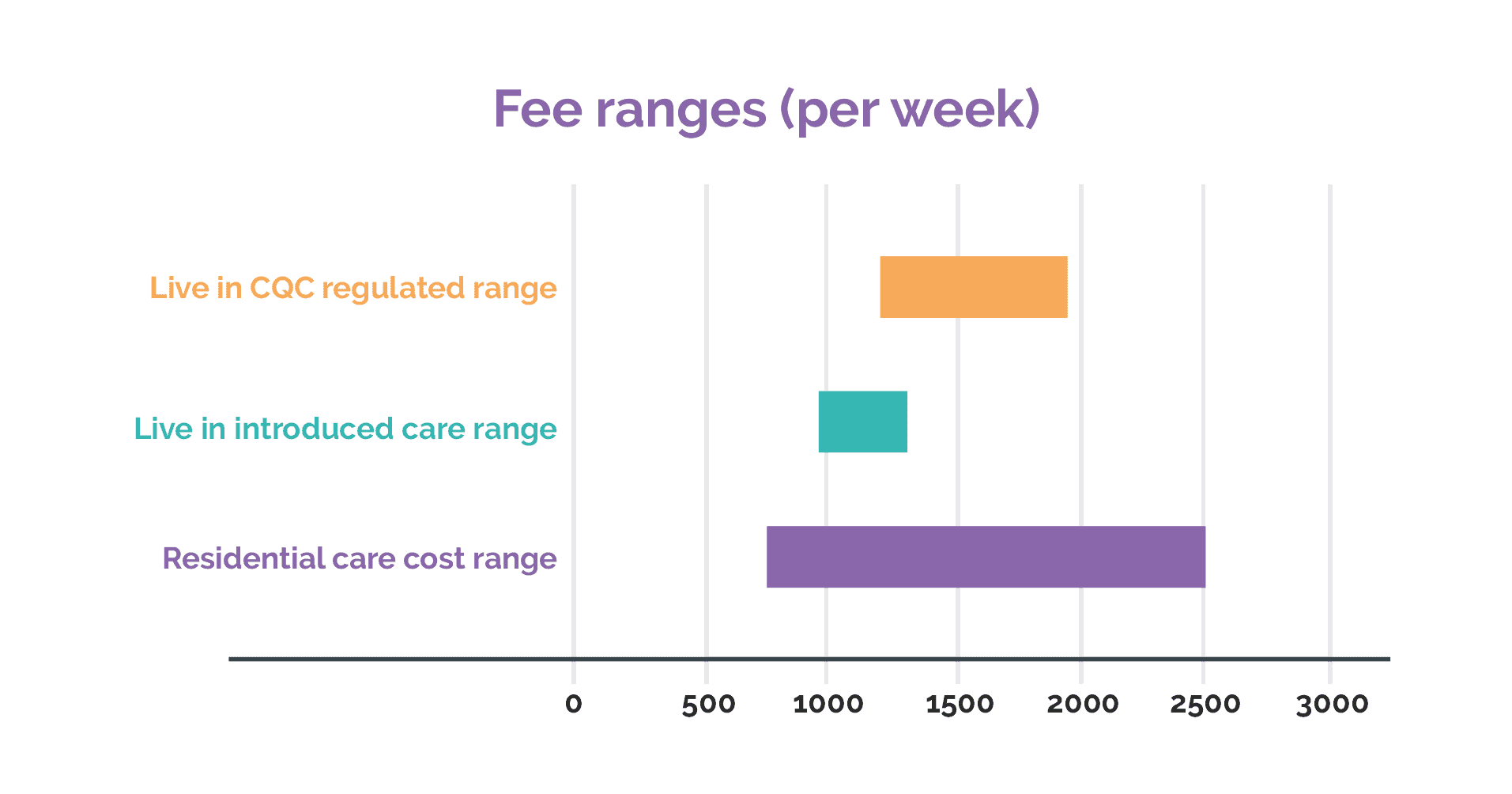
MOVING FORWARD
How can I choose which organisation to go with?
Once you’ve decided which model of care suits you and your situation best, you’ll be in a position to start looking at specific providers in your area.
Having served hundreds of thousands of families over many decades, the Live-In Care Hub members know even this final stage can be overwhelming. But there are ways to make it easier.
Ratings and Testimonials
We suggest you read independent reviews and testimonials from existing and past users of your shortlisted providers.
If such testimonials aren’t readily available on the care provider’s website, you may find reviews attached to their profile on third party sites via Google.
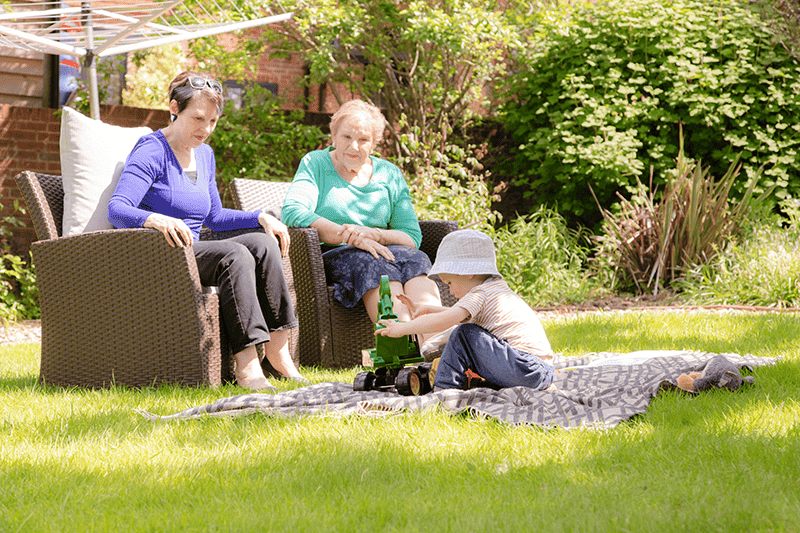
Trusted Sources
Of course, the internet is also full of information, much of which may help you reach a suitable decision. But it can also cause mental overload, and in some cases, misinformation.
To help you avoid these dangers, we suggest you only explore reputable websites that are hosted and populated by well-established sources. For example, the Live-in Care Hub is an impartial information resource and a friendly point of contact designed to help you navigate Live-in Care for yourself or a relative: www.liveincarehub.co.uk
Another trusted source is the consumer group, Which? Who have written several helpful articles on sourcing the perfect care solution for yourself or a loved one:
‘Questions to ask when choosing a care home’
‘How to choose a home care agency’
As they say, ‘the more information you have, the more confident you’ll feel about making the right choice.’
Additional points to consider when speaking to prospective care providers
When it comes to speaking with prospective care providers, the Live-in Care Hub has devised a further checklist. The following considerations should help to shed some light on whether the organisation(s) you speak with can really provide the best type of care for your loved one.
‘Try before you buy’ is sometimes the only way to know whether a product or service is right for you. And when it comes to investing in quality care for your loved one, it’s only natural to seek assurance that your investment will lead to the desired outcomes – a comfortable quality of life for as long as possible.
Not only that, but if you try a service and find that – for whatever reason – it’s not delivering the outcomes you hoped for, the Live-in Care Hub believes you should have the freedom to discontinue using that service without any hassle or friction, especially when someone’s quality of life is at stake.
Hence, it’s crucial to consider whether the organisation(s) you are evaluating provide such flexibility. Allowing individuals to try a service without a long-term commitment is often an indication of high quality. It demonstrates the organisation’s confidence in the excellence of their services.
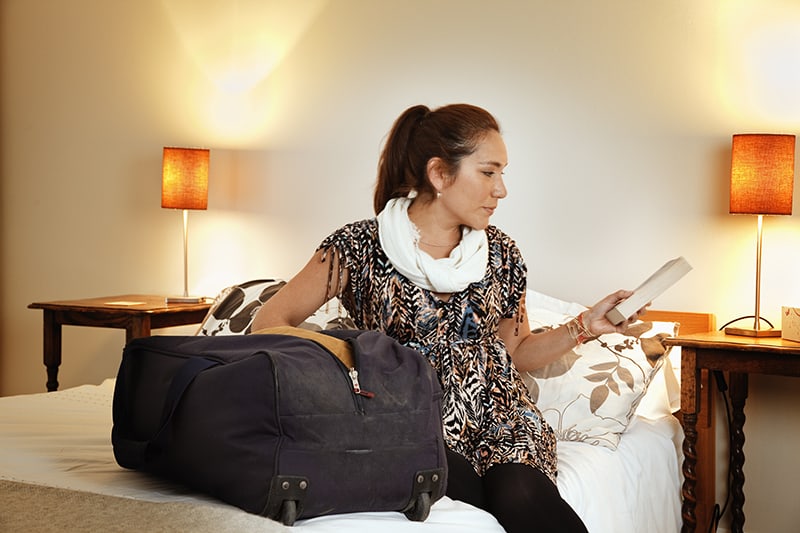
1 This research was carried out by the independent organisation, OnePoll and contains responses from over 2000 UK adults.
2 Conducted by independent research organisation OnePoll, in November 2022
3 YouGov Survey (2023) Most Popular Forms of Elderly Care
4 Age UK (2019), Falls in later life: a huge concern for older people.
5 NHS Inform, Scotland (2023) Causes of Falls
6 Ilhama, Pandyan & Roffe (2021) European Geriatric Medicine 12. Pp 79-89.
7 Allan, Stephen (2018) Price and quality across English care homes: Evidence from a secret shopper survey, Report commissioned by the Live-in Care Hub (P.9)
8 Allan, Stephen (2018) Price and quality across English care homes: Evidence from a secret shopper survey, Report commissioned by the Live-in Care Hub (P.9)
